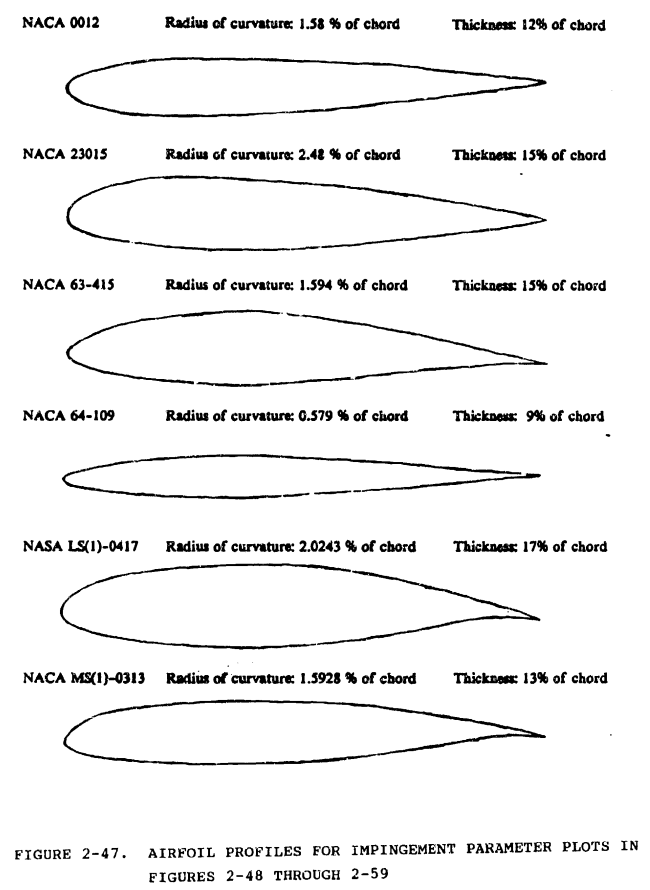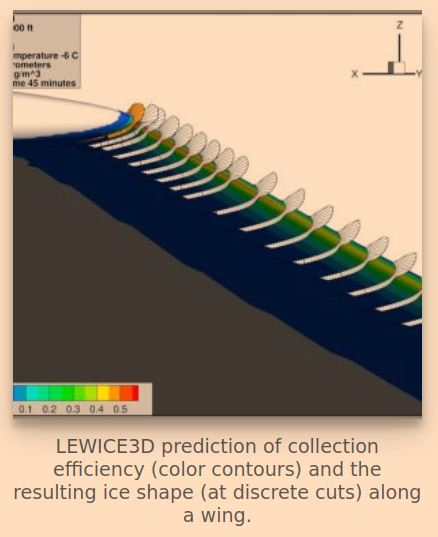Aircraft designs for flight in icing are improved and proven effective by several tools, including analysis, icing wind tunnel test, and flight test in icing conditions.
Design handbooks
Design handbooks have charts and tables that can be used to perform analyses for aircraft icing and ice protection.

from "Aircraft Icing Handbook", DOT/FAA/CT-88/8 apps.dtic.mil
Analysis
There are computerized icing analysis tools available from NASA, and from commercial vendors. There is also "bespoke" software created for special purposes.

from "Glenn Research Center Software" www1.grc.nasa.gov
Laboratory tests
A wind tunnel is a large tube with a fan to produce air flow at a calibrated airspeed. Wind tunnels are used to study many effects on aircraft, including icing. Artificially produced ice shapes (often 3D printed) may be adhered to airplane models, and the effects studied.
To simulate in-flight icing conditions, "Icing Wind Tunnels" often use refrigeration …
read more




